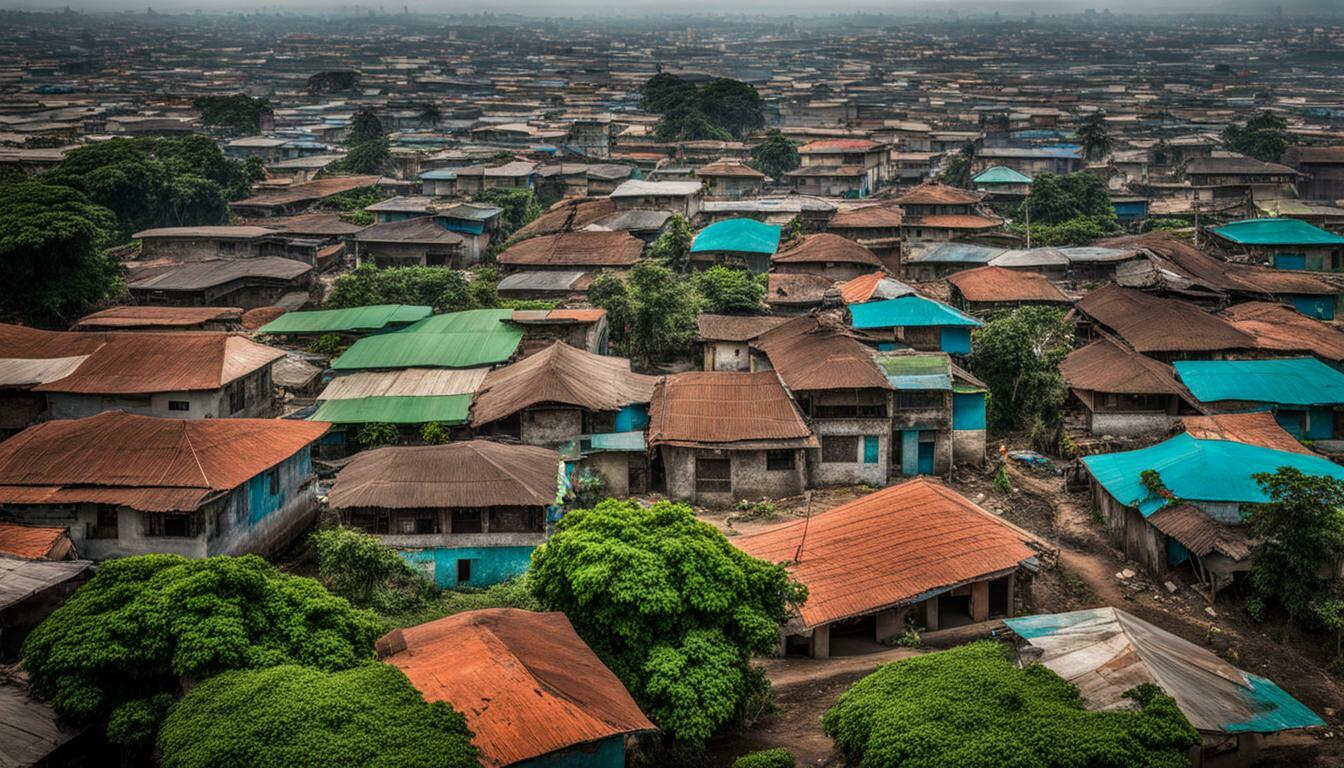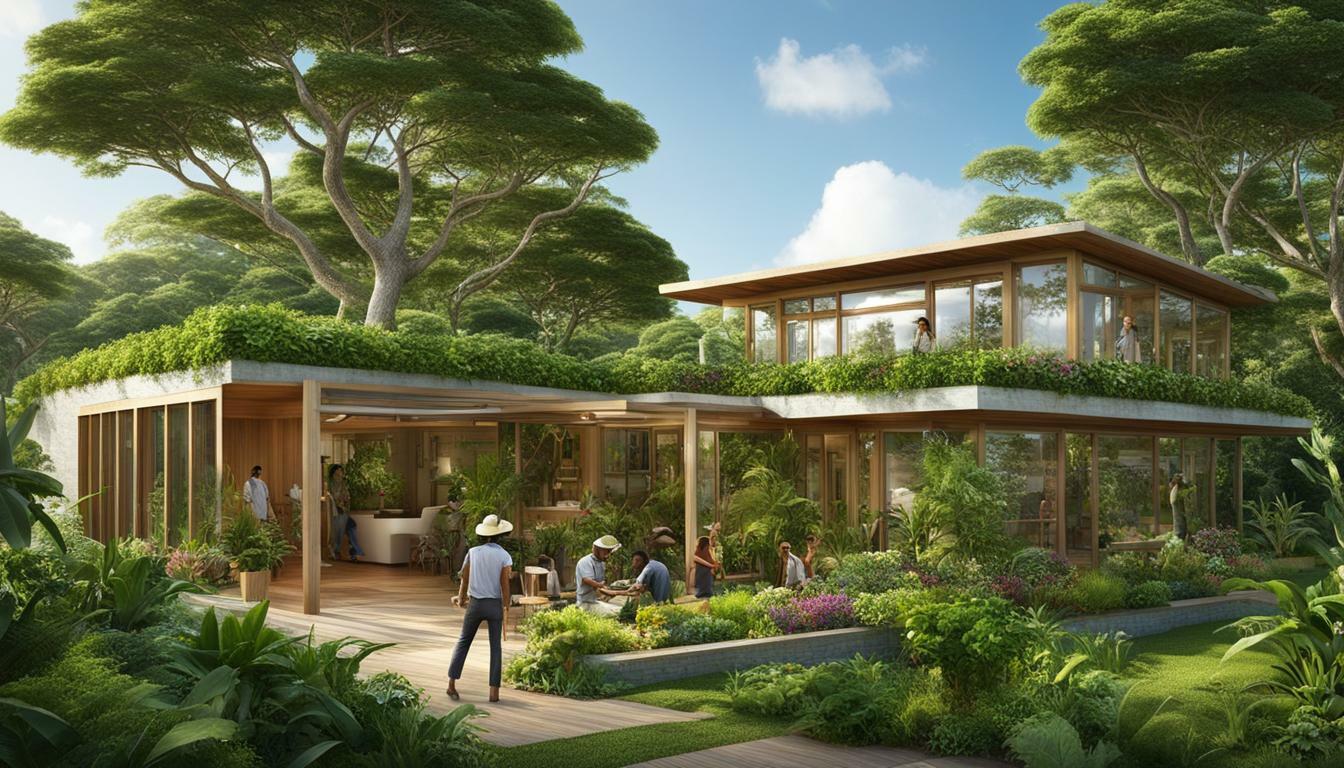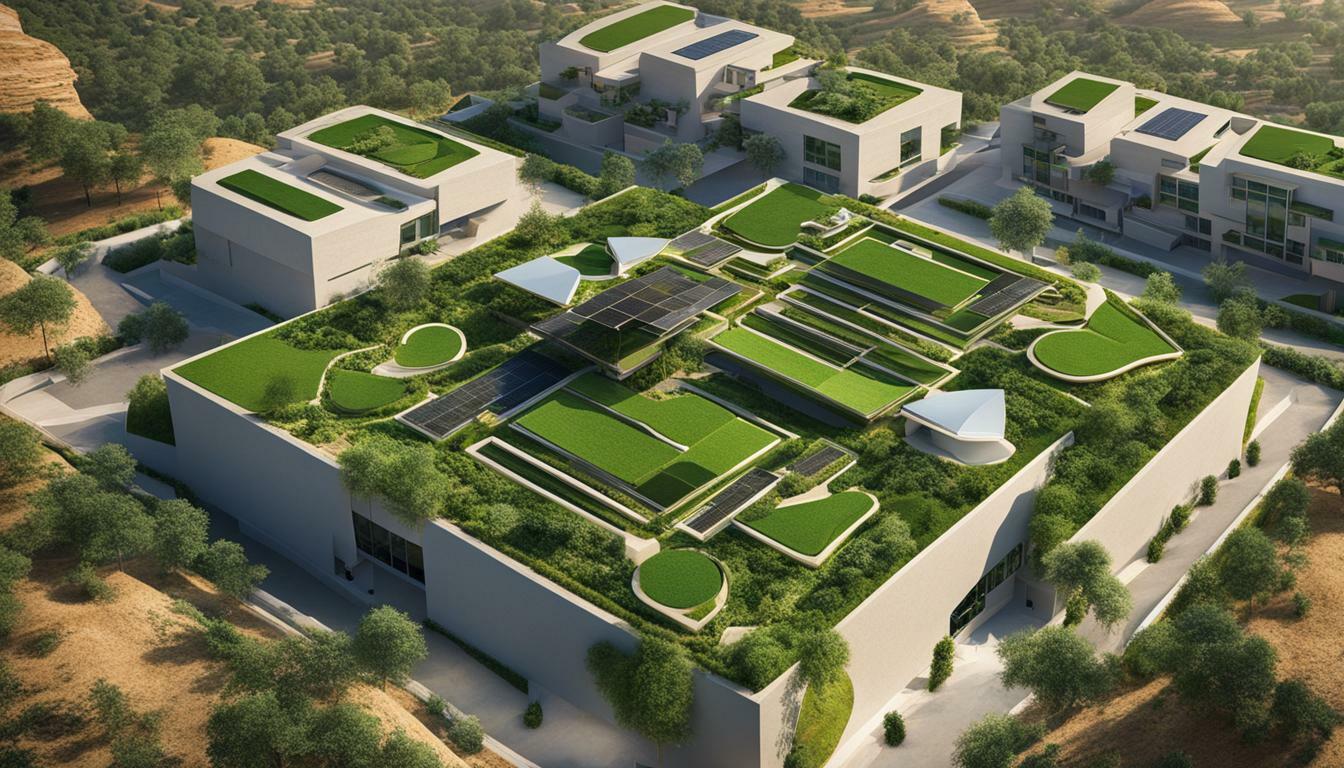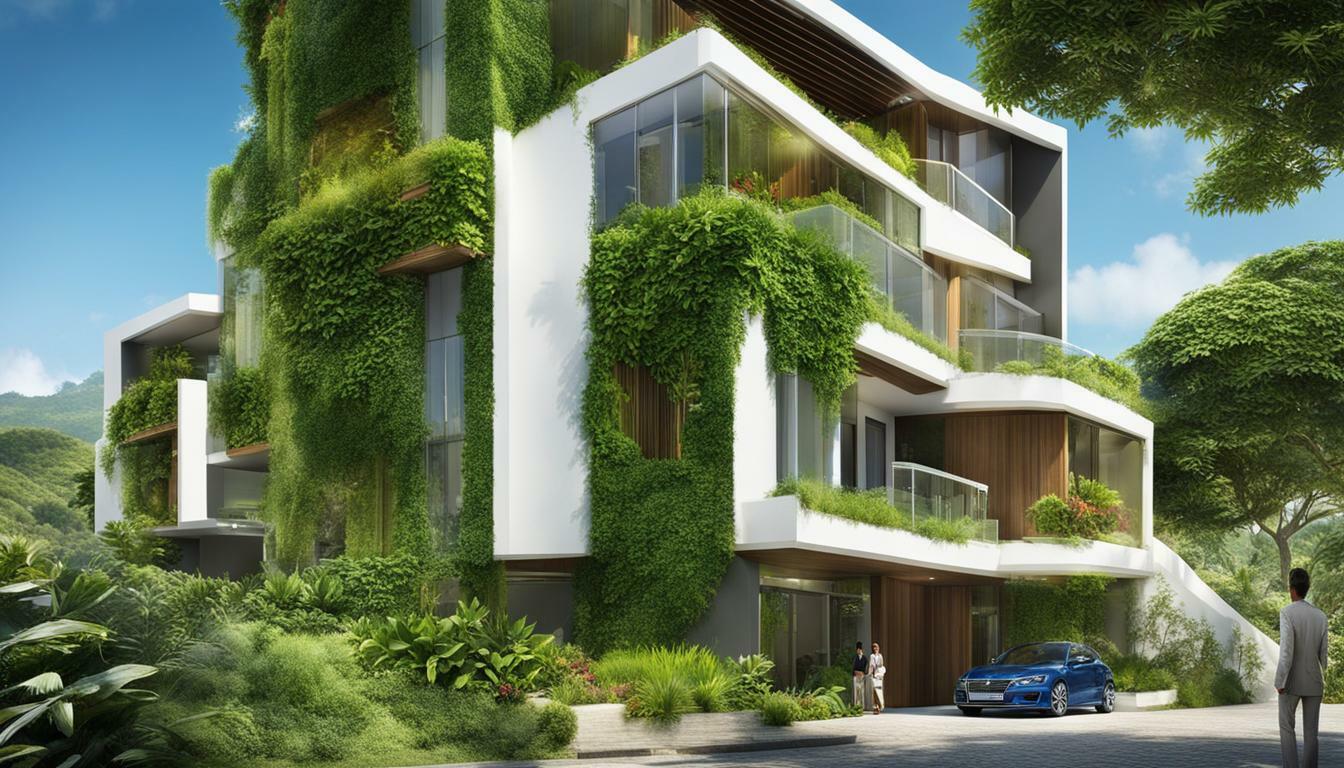Croatia Green Building History
Croatia, known for its stunning natural beauty, has a rich history of sustainable architecture and eco-friendly construction practices. From utilizing traditional building materials to embracing innovative green building techniques, Croatia has become a leader in environmentally conscious design and construction.
The country’s commitment to sustainable development is evident in the many green infrastructure projects, sustainable building designs, and advancements in eco-friendly construction materials that have emerged over the years. Let’s take a closer look at the fascinating history of green building in Croatia.
- Croatia has a long history of sustainable architecture and eco-friendly construction practices.
- The country is committed to sustainable development and has implemented many green infrastructure projects.
- Croatia has made significant advancements in sustainable building materials and designs.
- The integration of renewable energy sources is an essential aspect of sustainable architecture in Croatia.
- Government policies and regulations promote and support green building practices and sustainable development in Croatia.
The Evolution of Green Building in Croatia
Over the years, Croatia has made impressive strides in promoting green building practices, driven by a strong commitment to environmental sustainability. The country has been at the forefront of developing green infrastructure, implementing innovative solutions that promote energy efficiency and reduce the environmental impact of construction.
One of the key drivers of green building practices in Croatia has been the need to address environmental challenges arising from urbanization and economic growth. The country has recognized that sustainable development is crucial for long-term prosperity, and has implemented policies and initiatives aimed at promoting a greener economy.
Environmental sustainability continues to be a top priority for Croatia, as reflected in the government’s National Development Strategy, which emphasizes the importance of sustainable development. The strategy recognizes that environmental protection and sustainable use of resources are vital for the country’s economic competitiveness and social cohesion.
Green building practices in Croatia have evolved considerably over the years, with architects and designers integrating eco-friendly solutions into building design. The use of green building materials, such as locally sourced timber and recycled materials, has become increasingly prevalent in construction projects across the country.
Additionally, the implementation of renewable energy sources, such as solar panels and wind turbines, has become a standard practice in new construction projects, reducing the carbon footprint of buildings and promoting energy efficiency.
Overall, Croatia’s commitment to green building practices and environmental sustainability has led to a significant transformation in the country’s architectural landscape. The evolution of green building practices in Croatia has been characterized by a growing emphasis on energy efficiency, the use of renewable energy sources and the integration of green infrastructure and materials. These efforts have had a positive impact on the environment and set a strong example for other countries looking to prioritize sustainability in their architecture and construction industries.

Croatia has long been committed to sustainable development initiatives, with a particular emphasis on green building design. The country has implemented various policies and regulations to promote eco-friendly construction practices and encourage the use of sustainable materials.
One such initiative is the Croatian Green Building Council, which was established in 2008. The council aims to promote sustainable building practices and increase awareness of the importance of environmental sustainability in the construction industry. It also provides certification for buildings that meet specific sustainability criteria.
Another notable initiative is the Zagreb Green City Action Plan, which was launched in 2009. The plan aims to create a more sustainable urban environment by improving public transport, promoting green spaces, and encouraging the use of renewable energy sources.
In terms of green building design, Croatia has been at the forefront of innovation. The country has implemented various sustainable design practices, such as passive solar heating and cooling, rainwater harvesting, and the use of natural ventilation systems.
One example of sustainable design in Croatia is the Solaris Kornati Hotel, which is located on the Croatian coast. The hotel features a range of sustainable design elements, including a green roof, solar panels, and a rainwater harvesting system.
Overall, Croatia has demonstrated its commitment to sustainable development through its innovative green building design and eco-friendly construction practices. The country’s efforts to promote environmental sustainability in the construction industry are a testament to its dedication to creating a greener future.

As Croatia continues to prioritize environmentally friendly construction practices, significant advancements have been made in sustainable building materials. The use of sustainable materials not only reduces the environmental impact of construction but also offers economic benefits in terms of energy efficiency and long-term durability.
One example of sustainable building materials in Croatia is the use of locally sourced wood in construction projects. Not only does this support the local economy, but it also reduces transport emissions and promotes sustainable forestry practices.
Another innovative solution is the use of recycled and reclaimed materials, such as glass, steel, and stone. By repurposing materials that would otherwise end up in landfills, the construction industry can significantly reduce its carbon footprint and contribute to a circular economy.
Additionally, Croatia has been at the forefront of developing and implementing new technologies for sustainable building materials, such as the use of photocatalytic materials that reduce air pollution by breaking down harmful chemicals and pollutants.

Overall, the advancements made in sustainable building materials in Croatia demonstrate the country’s commitment to green building practices and environmental sustainability. By incorporating these materials into construction projects, Croatia is taking significant steps towards a more eco-friendly and economically viable future.
The Role of Renewable Energy in Croatian Architecture
Croatia has made impressive strides in incorporating renewable energy sources into its architecture in recent years. The integration of sustainable energy into building design has become a top priority, as the country continues to prioritize environmentally conscious practices.
One of the most notable renewable energy sources used in Croatian architecture is solar power. With an average of 2,600 hours of sunshine each year, the country has a great potential for harnessing solar energy. Many buildings across Croatia have incorporated solar panels into their design, which can be seen on rooftops and as integrated façade systems.
Wind power is also utilized in Croatia’s architecture, particularly in coastal areas where strong winds are prevalent. Wind turbines are often used to power buildings and supplement their energy needs.
Hydroelectric power is another renewable energy source that Croatia has tapped into. The country’s abundance of water resources has allowed for the creation of hydroelectric power plants, which generate electricity by harnessing the flow of water.
The use of renewable energy sources in Croatian architecture not only reduces the environmental impact of buildings, but it also provides a sustainable source of energy for the future.

“The integration of sustainable energy into building design has become a top priority, as the country continues to prioritize environmentally conscious practices.”
Croatia’s commitment to sustainable architecture and renewable energy has not gone unnoticed. The country has received international recognition for its innovative designs and efforts towards environmental sustainability. By continuing to prioritize green building practices and the use of renewable energy sources, Croatia is setting an example for other countries to follow.
Sustainable Architecture in Croatia: Green Building Case Studies
Croatia has been a pioneer in sustainable architecture, with many exemplary green buildings that demonstrate the country’s commitment to eco-friendly construction practices. Let’s take a closer look at some of these remarkable projects.
1. The Green Pavilion
The Green Pavilion in Zagreb is a multi-purpose building that was designed to minimize its environmental impact. The building utilizes natural ventilation and lighting, and incorporates rainwater harvesting and renewable energy sources. The Green Pavilion also has a green roof that helps to regulate the temperature of the building and reduce urban heat island effects. The building has won numerous awards for its sustainable design.

The Zamet Centre in Rijeka is a stunning example of sustainable architecture. The building was designed to be a community hub, with a range of facilities including a gymnasium, library, and cinema. The building incorporates a range of sustainable features, including natural ventilation systems, a green roof, and a rainwater harvesting system. The Zamet Centre has won several awards for its innovative and sustainable design.
3. The Green Building at the University of Zagreb
The Green Building at the University of Zagreb is a state-of-the-art facility that was designed to be a model for sustainable architecture in Croatia. The building incorporates a range of green technologies, including solar panels, a rainwater harvesting system, and a green roof. The building also utilizes natural ventilation and lighting, and has minimized its environmental impact through the use of sustainable building materials.
These green building case studies demonstrate the innovative and environmentally conscious approach that Croatia has taken towards building design and construction. As the country continues to prioritize sustainable development and eco-friendly construction practices, we can expect to see more remarkable green buildings emerging throughout the country.
Government Policies and Regulations on Green Building
As part of its commitment to sustainable development, Croatia has implemented various government policies and regulations that promote and support green building practices. These policies are aimed at reducing the environmental impact of construction projects and increasing the use of sustainable materials and technologies in building design.
One such policy is the Green Building Council Croatia, which was established in 2008 with the aim of promoting environmentally responsible building practices and providing a framework for the certification of green buildings. The council works closely with the government to develop and implement policies that support sustainable development.
In 2010, the Croatian government also introduced the Act on Spatial Planning and Construction, which includes provisions for promoting sustainable development and green building practices. The act requires all new construction projects to comply with certain environmental standards, such as using energy-efficient materials and technologies and reducing water consumption.
The government has also established a number of initiatives aimed at promoting sustainable development and green building practices, such as the Sustainable Construction and Development Programme. This programme provides financial support and incentives for companies that engage in sustainable construction practices.
Overall, these policies and initiatives demonstrate Croatia’s commitment to promoting sustainable development and green building practices. By encouraging the use of sustainable materials and technologies and reducing the environmental impact of construction projects, Croatia is working towards a greener future for all.

Throughout Croatia’s history, sustainable architecture and eco-friendly construction practices have played a significant role in shaping the country’s architectural landscape. Today, Croatia continues to prioritize environmentally conscious design and construction, leading the way for a greener future.
Croatia Green Building History
From the traditional use of local materials like stone and wood to the modern development of green infrastructure, the history of green building in Croatia is a fascinating one. The country’s commitment to sustainable architecture has led to the implementation of eco-friendly construction practices and innovative green building designs.
The Evolution of Green Building in Croatia
Croatia’s dedication to environmental sustainability has driven the evolution of green building practices within the country. The development of green infrastructure and implementation of sustainable building materials have become increasingly important, creating a more environmentally friendly built environment.
Sustainable Development Initiatives in Croatia
Croatia has undertaken several sustainable development initiatives, focusing on green building design and environmentally conscious construction practices. These efforts have resulted in notable green building projects throughout the country.
Advancements in Sustainable Building Materials
Croatia has made significant advancements in sustainable building materials, prioritizing the use of environmentally friendly alternatives. These advancements have contributed to a reduction in carbon emissions and a more sustainable construction industry.
The Role of Renewable Energy in Croatian Architecture
Renewable energy plays a significant role in Croatian architecture, with a focus on integrating sustainable energy sources into building design. This integration has led to a reduction in reliance on non-renewable energy sources and a more sustainable built environment.
Green Building Case Studies in Croatia
Croatia has several exemplary green building case studies that demonstrate their commitment to eco-friendly construction practices. These projects showcase innovative design and advanced sustainable construction methods.
Government Policies and Regulations on Green Building
The Croatian government has implemented policies and regulations that promote and support green building practices and sustainable development. These initiatives have driven the increased adoption of environmentally conscious design and construction practices.
Conclusion
In conclusion, Croatia’s history and continued commitment to sustainable building materials, green building design, renewable energy integration, and sustainable development initiatives have positioned the country as a leader in environmentally conscious architecture and construction. As Croatia continues to pave the way for a greener future, other countries can look to their innovative approach to sustainability as an example to follow.
FAQ
What is the history of green building in Croatia?
The history of green building in Croatia is a fascinating one, with sustainable architecture and eco-friendly construction practices playing a crucial role in shaping the country’s architectural landscape.
How have green building practices evolved in Croatia?
Over the years, green building practices in Croatia have evolved significantly, with a strong focus on environmental sustainability and the development of green infrastructure to support eco-friendly construction.
What sustainable development initiatives have been undertaken in Croatia?
Croatia has implemented various sustainable development initiatives, with a particular emphasis on innovative green building designs that prioritize environmental friendliness and sustainability.
What advancements have been made in sustainable building materials in Croatia?
Croatia has made significant advancements in the development of sustainable building materials, showcasing its commitment to using eco-friendly construction practices that minimize environmental impact.
How does renewable energy feature in Croatian architecture?
Renewable energy plays a significant role in Croatian architecture, with sustainable energy sources integrated into building design to promote energy efficiency and reduce reliance on non-renewable resources.
Can you provide examples of green building case studies in Croatia?
Absolutely! There are several noteworthy green building case studies in Croatia that exemplify the country’s dedication to eco-friendly construction practices and sustainable architecture.
What are the government policies and regulations on green building in Croatia?
Croatia has established government policies and regulations that actively promote and support green building practices and sustainable development, ensuring a greener and more environmentally conscious future.
In conclusion, what key aspects define green building in Croatia?
In conclusion, green building in Croatia encompasses sustainable building materials, innovative design approaches, the integration of renewable energy, and the implementation of government policies and regulations that prioritize environmental sustainability and eco-friendly construction practices.








